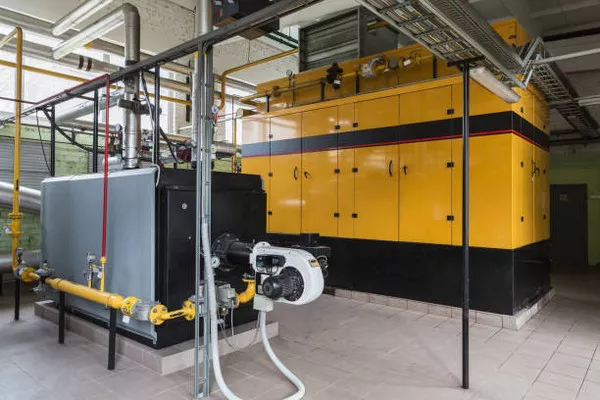Direct current (DC) generators are essential electrical machines that have been pivotal in powering various industries and applications for well over a century. These versatile devices serve a fundamental role in converting mechanical energy into electrical energy by employing the principle of electromagnetic induction. In this article, we will delve into the world of DC generators, exploring their working principles, types, and a wide range of applications across diverse industries.
Understanding DC Generators
DC generators, also known as dynamos, are electrical machines that generate direct current electricity. They are based on the fundamental principle of electromagnetic induction, discovered by Michael Faraday in the early 19th century. This principle states that when a conductor moves within a magnetic field, an electromotive force (EMF) is induced in the conductor. In the case of DC generators, this EMF is generated in a rotating armature within a magnetic field.
Components of a DC Generator
Armature: The armature is the core component of a DC generator where electrical energy is produced. It consists of a coil of wire mounted on a shaft that can rotate within the magnetic field.
Field Magnets: These are permanent magnets or electromagnets that create a stationary magnetic field. The field magnets are responsible for inducing EMF in the armature as it rotates.
Commutator: The commutator is a split-ring that is mounted on the armature shaft and rotates with it. It functions as a switch that reverses the direction of the current flow in the armature coil, converting alternating current (AC) generated in the armature into direct current (DC).
Brushes: Brushes are stationary contacts that press against the commutator, allowing the generated current to be collected from the armature and transferred to an external circuit.
Working Principle of a DC Generator
When the armature of a DC generator rotates within the magnetic field produced by the field magnets, Faraday’s law of electromagnetic induction comes into play. As the armature rotates, the magnetic field lines cut across the coil of wire, inducing an EMF in the armature according to Faraday’s law. This EMF creates a potential difference (voltage) between the two ends of the armature coil.
However, the voltage produced in the armature is alternating in nature, meaning it changes direction as the coil rotates. To convert this alternating voltage into direct current, the commutator and brushes are used. The commutator reverses the direction of the current flow in the armature coil as it rotates, resulting in a unidirectional current flow that can be collected by the brushes and transferred to an external circuit.
Types of DC Generators
DC generators come in various types, designed to meet specific requirements and applications. The main types of DC generators are:
Series-Wound DC Generators: In series-wound generators, the field windings are connected in series with the armature windings. These generators provide high current at low voltage and are often used in applications requiring substantial starting torque, such as electric traction systems and some industrial applications.
Shunt-Wound DC Generators: Shunt-wound generators have their field windings connected in parallel with the armature windings. They offer relatively constant voltage output and are commonly used in applications where a steady and consistent voltage is required, such as battery charging systems.
Compound-Wound DC Generators: Compound-wound generators combine both series and shunt field windings. This configuration provides the advantages of both high starting torque and stable voltage output. Compound-wound generators are employed in various applications, including industrial machinery and emergency backup power supplies.
Applications of DC Generators
DC generators have found extensive use in a wide range of applications across different industries due to their unique characteristics. Some of the notable applications include:
Electric Traction: DC generators were historically used to power electric locomotives and trams. While many modern electric trains now use alternating current (AC) systems, DC generators are still used in some older rail systems and for specialized purposes, such as subway systems.
Battery Charging: Shunt-wound DC generators are commonly used for charging batteries in vehicles, boats, and industrial equipment. Their ability to provide a consistent voltage output makes them ideal for this application.
Welding: DC generators are utilized in welding machines to provide the necessary current and voltage for various welding processes. Their ability to deliver stable output is crucial for maintaining weld quality.
Industrial Machinery: DC generators are employed in various industrial applications, including steel mills, paper mills, and textile factories.
They power heavy machinery and equipment requiring high torque at low speeds.
Emergency Backup Power: Compound-wound DC generators are often used as backup power sources in critical facilities such as hospitals, data centers, and communication towers. They provide reliable power during grid outages or emergencies.
Telecommunication Systems: DC generators play a vital role in ensuring uninterrupted power for telecommunication infrastructure, including cell towers and communication hubs.
Research Laboratories: Some scientific experiments and research equipment require precise and stable DC power sources, making DC generators suitable for these applications.
Aerospace Industry: DC generators are used in aircraft for various purposes, including powering communication equipment and providing backup power.
Conclusion
DC generators are integral electrical machines that have served a multitude of purposes across various industries for well over a century. Their ability to convert mechanical energy into direct current electricity has made them indispensable in applications ranging from electric traction to emergency backup power. While advancements in technology have introduced alternative power generation methods, DC generators continue to find their niche in specialized applications where their unique characteristics are valued. As industries evolve and demand for reliable and stable power persists, the significance of DC generators in our modern world remains unwavering.

